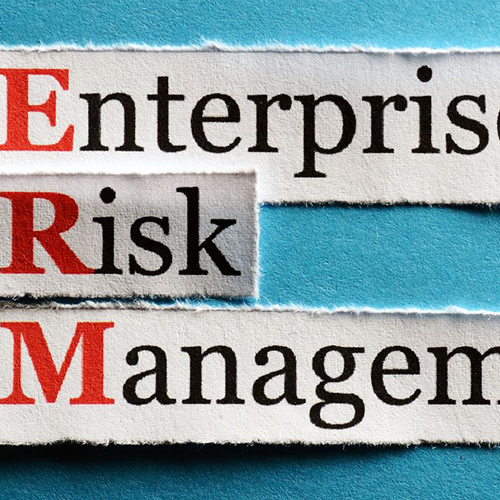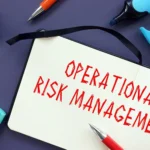This blog outlines the significant benefits of implementing Enterprise Risk Management (ERM) in the banking sector. ERM enhances risk awareness, ensures regulatory compliance, reduces losses, and improves operational efficiency and strategic goal alignment. By adopting ERM, banks can safeguard their reputation, boost profitability, and make better-informed decisions.
The financial sector is one of the most risk-prone industries, and banks are at the forefront of this risk. Banks need to continuously manage and monitor various risks due to credit and liquidity issues, market volatility, operational disruption, cybersecurity incidents, environmental, social, governance (ESG), etc.
Enterprise Risk Management (ERM) plays a critical role in mitigating the risks. Thus, implementing enterprise risk management (ERM) practices is a need across all financial institutions, irrespective of their size.
ERM refers to a structured approach to addressing (preventing, detecting, and mitigating) various organizational risks. It is a cyclical process of identifying, assessing, managing, and monitoring ongoing and new risks across an organization.
This blog discusses the key benefits of implementing enterprise risk management (ERM) in banking to help them streamline their risk management strategies and maximize profits.
9 Key Benefits of Implementing ERM in the Banking Sector
ERM implementation in banking can provide numerous benefits. Here are some key benefits of implementing ERM in banks and financial institutions.
1. Improve Risk Awareness
ERM encompasses all areas of organizational exposure to risks, including financial, operational, reporting, and compliance. A benefit of enterprise risk management is the oversight it provides.
ERM helps banks effectively identify and recognize the risks and communicate their impact to the leadership team, improving the response and decision-making ability for organizational growth.
2. Meet Regulatory Compliances
The financial services industry is heavily regulated, obligating financial institutions to comply with various global regulatory and compliance requirements.
A tailored enterprise risk management process can help financial institutions take a proactive approach to risk management. ERM provides a framework for managing risks, helping banks comply with regulations and demonstrate their compliance to the regulators.
ERM allows banks to effectively identify and assess risks across the organization and implement measures to mitigate, eliminate, or transfer these risks. By doing so, banks can maintain regulatory compliance, prevent operational disruptions and penalties, minimize losses, and improve risk management practices.
3. Reduce Losses & Increase Profitability
Financial institutions face numerous risks that can lead to monetary losses. Effective risk management can help banks reduce their costs by identifying the potential risks in advance and managing them proactively to minimize the likelihood of losses, reduce their risk exposure, and prevent losses.
It can also help institutions –
- Avoid overspending by preventing problems or risks
- Lower the insurance premiums
- Decrease the costs associated with risk management.
4. Safeguard Reputation
A robust ERM can help financial institutions safeguard their reputation and protect customer data, promote trust among customers, and avoid penalties from regulators.
Effective risk management can assist banks in improving their reputation by demonstrating their commitment to stakeholders and customers by effectively managing the risks. This can help gain trust and improve the bank’s reputation in the financial services market.
5. Improve Customer and Employee Satisfaction
Assessing various enterprise risks associated with new and ongoing initiatives within the organization is a critical component for efficient operations. By ensuring strong enterprise-wide risk management processes, banks can build customer confidence and improve business prospects over time.
With a well-thought-out and developed enterprise risk management plan, institutions can maintain a sense of security and confidence among customers and employees about the banks’ ability to maintain trust and deliver products and services.
An effective ERM plan also helps engage employees, leading to better results, sustainable growth, more customers, and higher customer satisfaction and loyalty.
Suggested Read: Address Various ERM Implementation Challenges
6. Improve Operational Efficiency
With a proactive approach to risk management, financial institutions or the banking industry can improve their resource usage and avoid costly outcomes of unexpected events. ERM helps them respond effectively in the event of a crisis when they occur, minimize disruption, and restore operations as quickly as possible.
ERM implementation provides banks with a framework that helps streamline their risk management processes and improve overall efficiency.
7. Meet Strategic Goals
A robust ERM program plays a critical role in shaping the organizations’ strategic goals, crucial for sustaining organizational growth that otherwise can be derailed by risks from internal or external threats.
ERM helps organizations and companies look at their risk profile holistically and proactively manage their risks, make informed decisions, and ensure that strategic goals are on track and targets are achievable while minimizing the potential negative consequences. It also helps in improving –
- Day-to-day operations
- Prioritize sufficient resources for risk management
- Processes executed by ERM
- Identifying new opportunities
8. Focused Risk Analysis and Reporting
ERM helps financial institutions and businesses assess, identify, and report risks proactively and holistically. It also helps bring focus on key risks and reporting for accurate and timely decisions crucial for the organizations to achieve strategic objectives.
By focusing on key risks, banks, and financial institutions can effectively allocate resources that can help them make better-informed decisions to manage potential risks, thereby improving transparency and enhancing customer and employee confidence.
9. Better Decision Making
ERM provides banks with a comprehensive view of the risks they face. This allows banks to make informed decisions regarding risk-taking activities.
Banks can weigh the potential risks and rewards of different activities and make decisions that align with their risk tolerance levels.
ERM Implementation with Domain-Centric Approach
Effective enterprise risk management (ERM) implementation is critical to banks’ success. ERM provides banks with a framework to manage risks effectively and integrate the best practices for risk management into their overall strategy. By implementing ERM in the organization, banks can improve their decision-making processes, boost their reputation, maximize profits, and minimize losses.
Anaptyss as a strategic partner assists banks with tailored digital solutions for implementing effective enterprise risk management programs, including control design, testing, and risk governance.
Interested in more specific guidance for effective ERM implementation? Write to us: info@anaptyss.com.


















